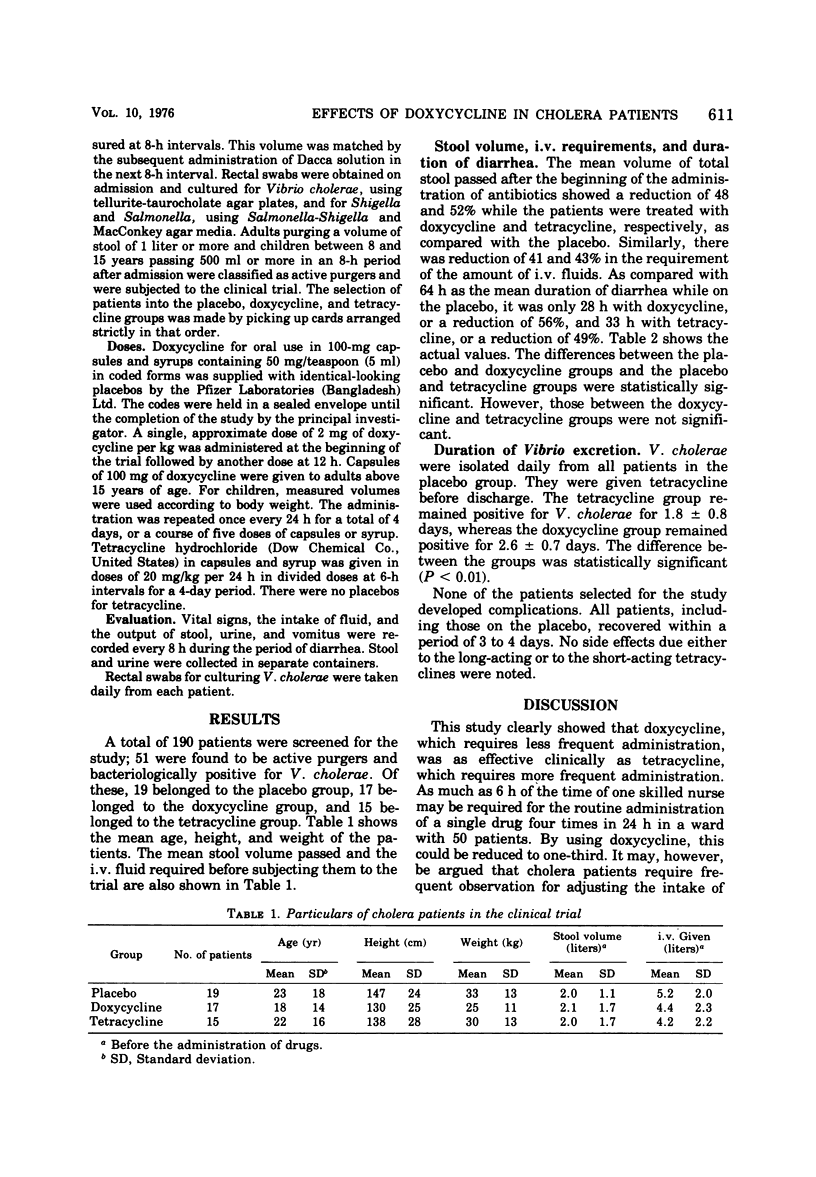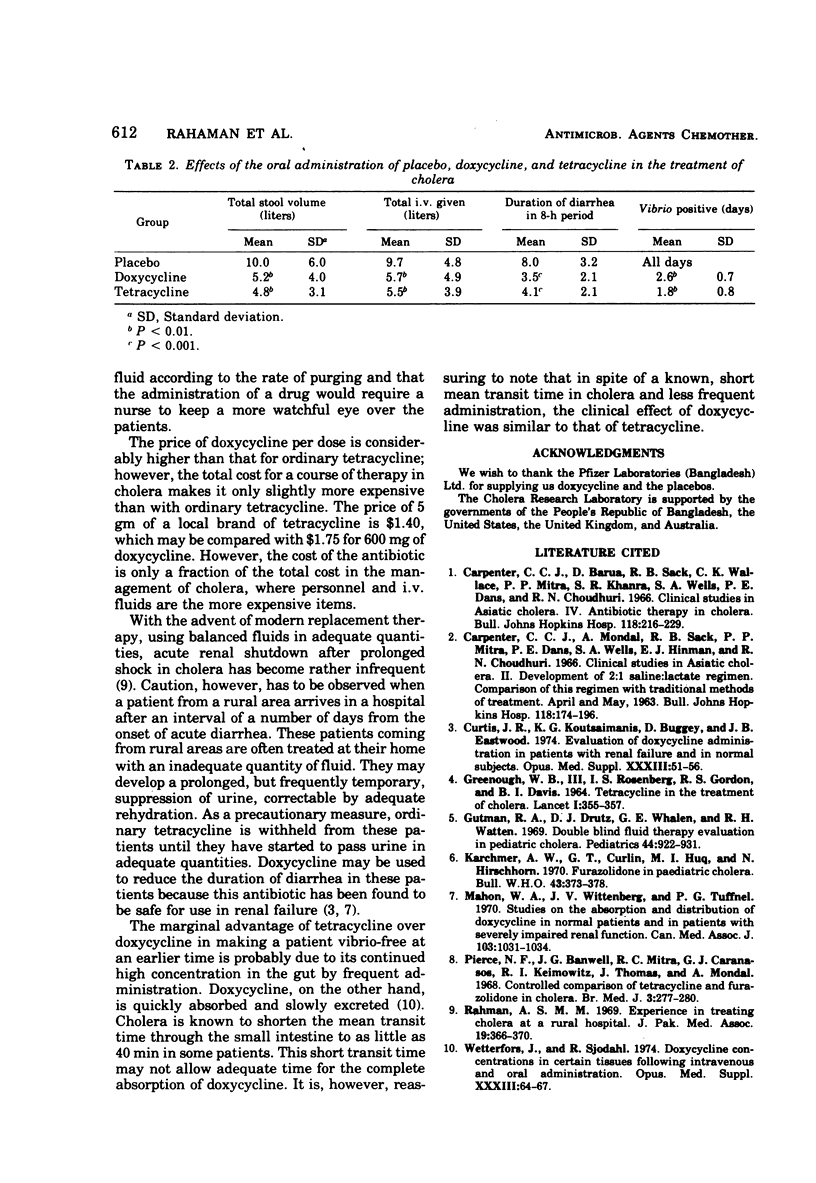Abstract
In 51 actively purging cholera patients the efficacy of doxycycline, a long-acting tetracycline, was compared with a placebo and tetracycline hydrochloride. Seventeen patients who were given doxycycline at the recommended dose of 2 mg/kg at the beginning of the study, at 12 h, and at the repeated dose once daily purged a mean volume of 5.1 liters of stool and received an average of 5.7 liters of intravenous fluid. Nineteen patients receiving the placebo purged 10.1 liters of stool and received 9.7 liters of fluid. Fifteen patients given tetracycline hydrochloride at 6-h intervals passed 4.8 liters of stool and received 5.5 liters of fluid. The durations of diarrhea calculated in 8-h periods were 3.5, 8.0, and 4.1 h in the respective groups receiving doxycycline, placebo, and tetracycline. The differences between the doxycycline and placebo treatments and the tetracycline and placebo treatments were statistically significant. Those receiving doxycycline became vibrio-free in about 3 days as compared with 2 days for those receiving tetracycline; the group given the placebo were vibrio positive for the duration of their hospitalization. The results show that in the treatment of cholera the administration of doxycycline once daily has effects equal to those when tetracycline is administered at 6-h intervals. This is a distinct advantage because it decreases the demand on nursing personnel in epidemics. Also, doxycycline may be safely administered in cases of suspected renal failure from prolonged shock in cholera.
Full text
PDF


Selected References
These references are in PubMed. This may not be the complete list of references from this article.
- GREENOUGH W. B., 3rd, GORDON R. S., Jr, ROSENBERG I. S., DAVIES B. I., BENENSON A. S. TETRACYCLINE IN THE TREATMENT OF CHOLERA. Lancet. 1964 Feb 15;1(7329):355–357. doi: 10.1016/s0140-6736(64)92099-9. [DOI] [PubMed] [Google Scholar]
- Gutman R. A., Drutz D. J., Whalen G. E., Jr, Watten R. H. Double blind fluid therapy evaluation in pediatric cholera. Pediatrics. 1969 Dec;44(6):922–931. [PubMed] [Google Scholar]
- Karchmer A. W., Curlin G. T., Huq M. I., Hirschhorn N. Furazolidone in paediatric cholera. Bull World Health Organ. 1970;43(3):373–378. [PMC free article] [PubMed] [Google Scholar]
- Mahon W. A., Wittenberg J. V., Tuffnel P. G. Studies on the absorption and distribution of doxycycline in normal patients and in patients with severely impaired renal function. Can Med Assoc J. 1970 Nov 7;103(10):1031–1034. [PMC free article] [PubMed] [Google Scholar]
- Pierce N. F., Banwell J. G., Mitra R. C., Caranasos G. J., Keimowitz R. I., Thomas J., Mondal A. Controlled comparison of tetracycline and furazolidone in cholera. Br Med J. 1968 Aug 3;3(5613):277–280. doi: 10.1136/bmj.3.5613.277. [DOI] [PMC free article] [PubMed] [Google Scholar]


